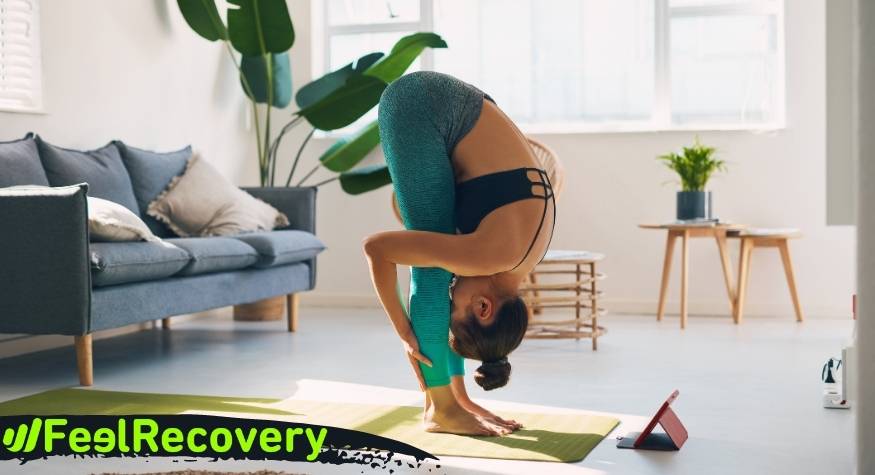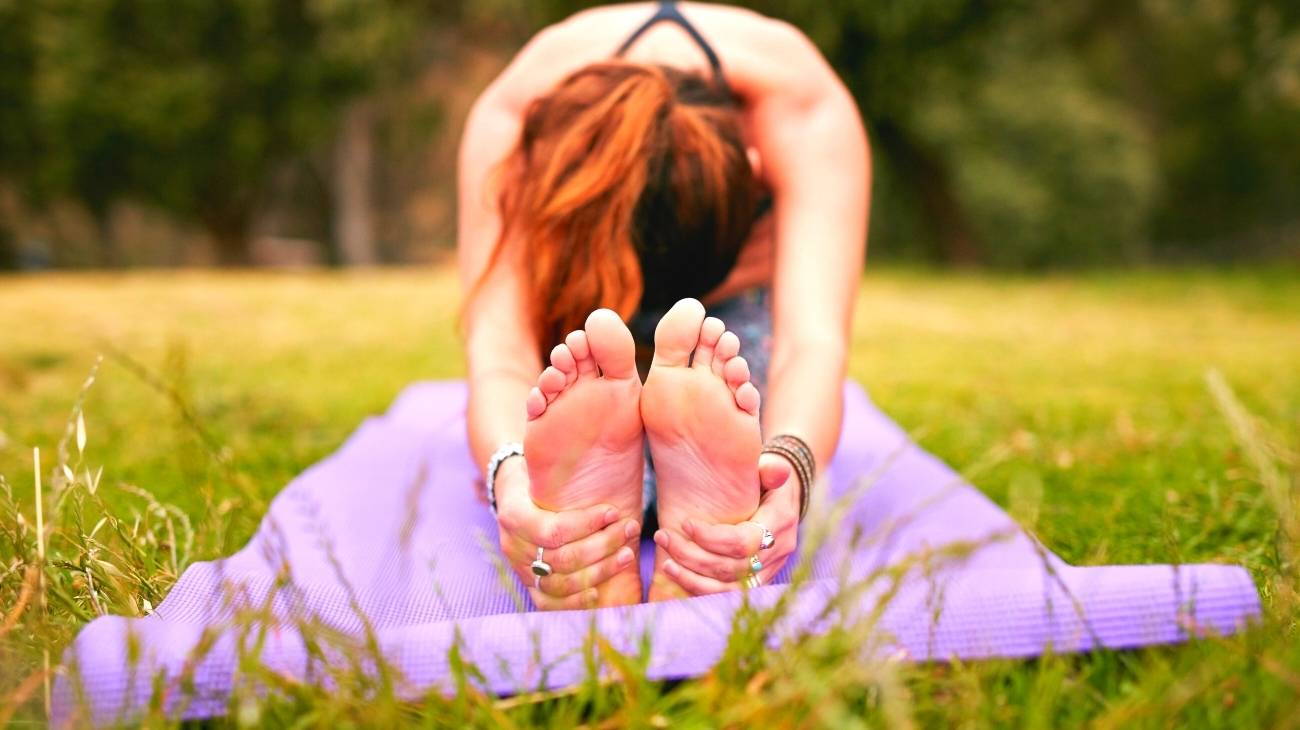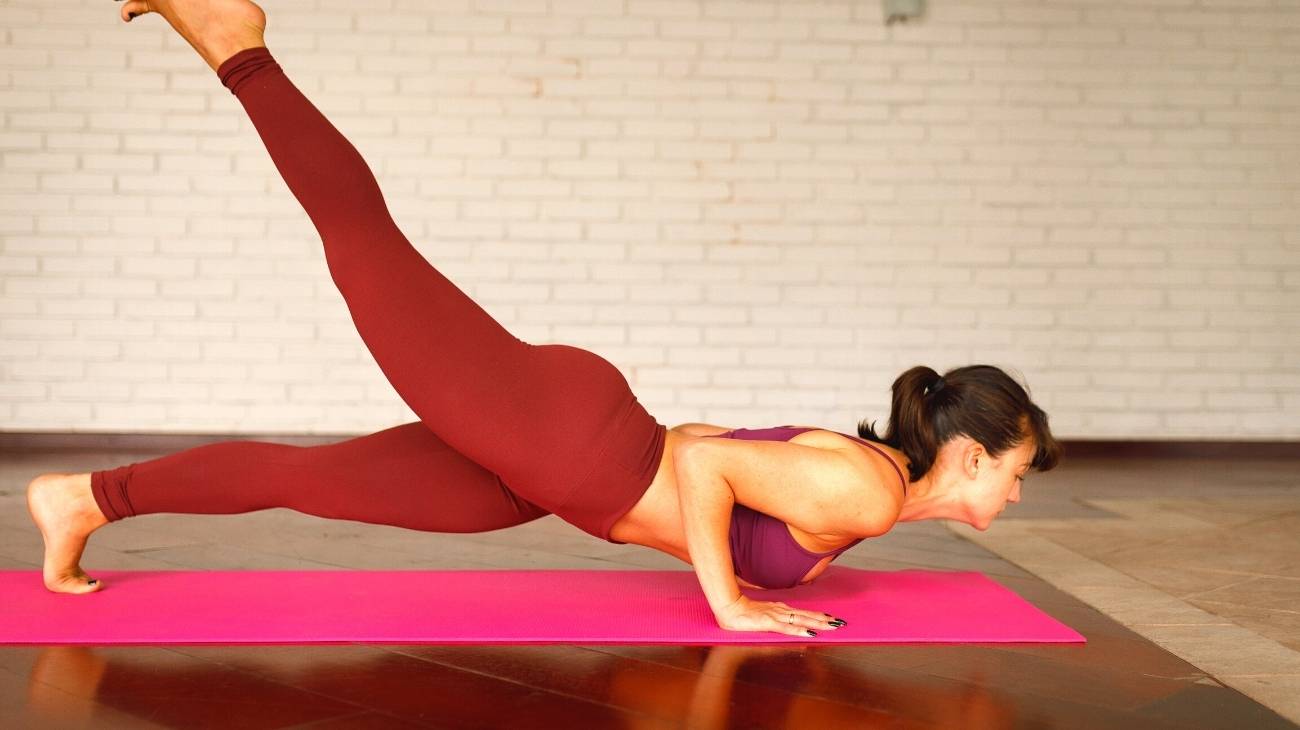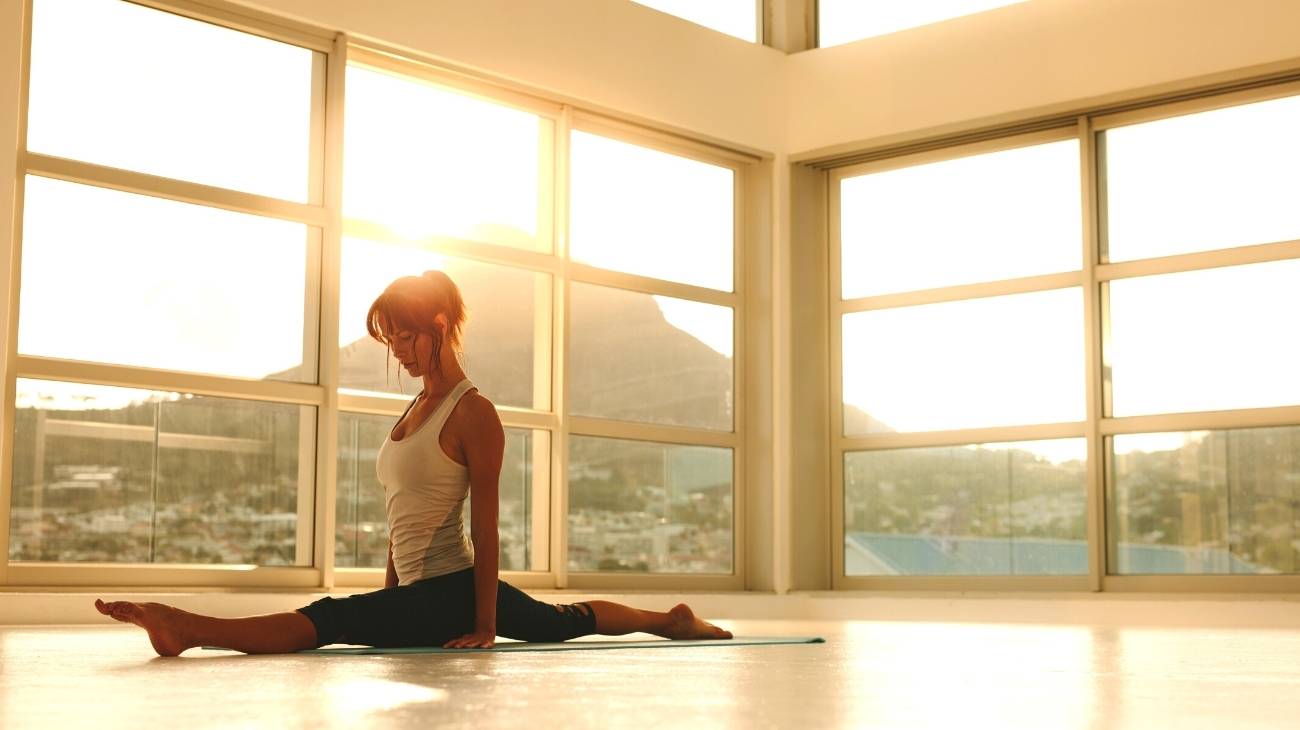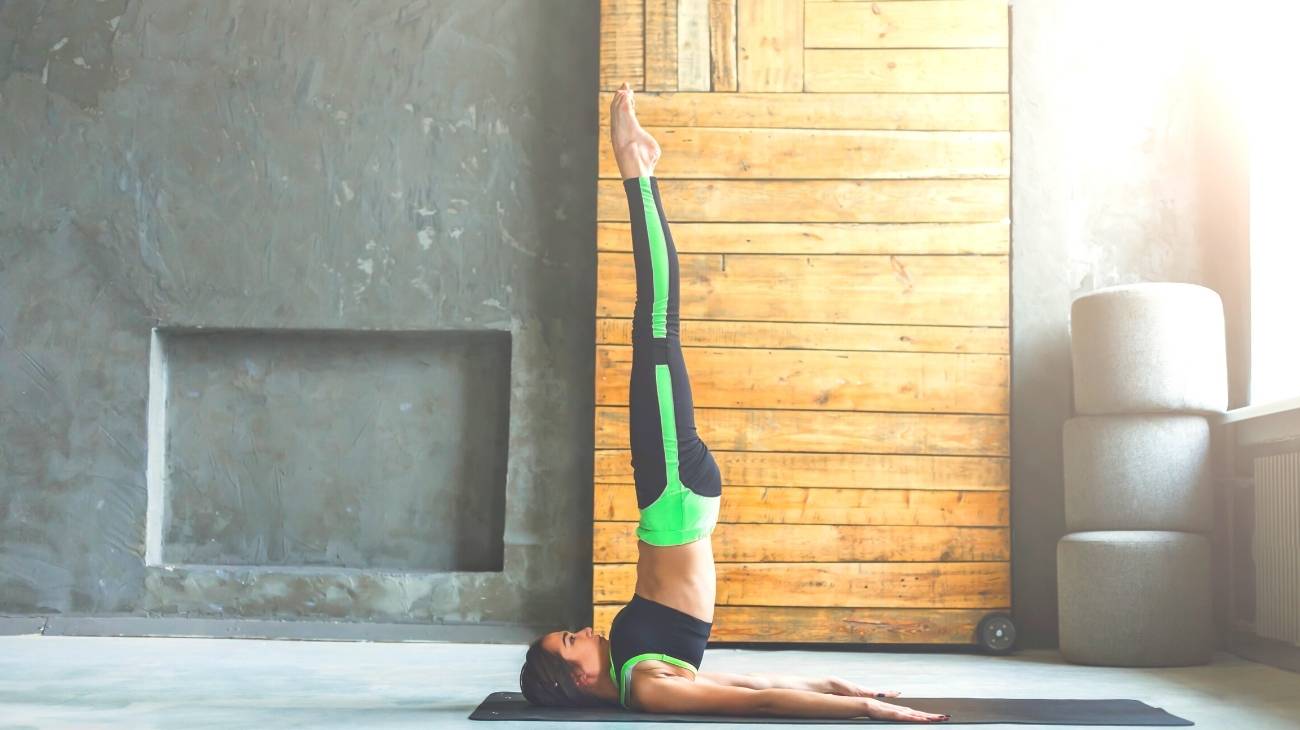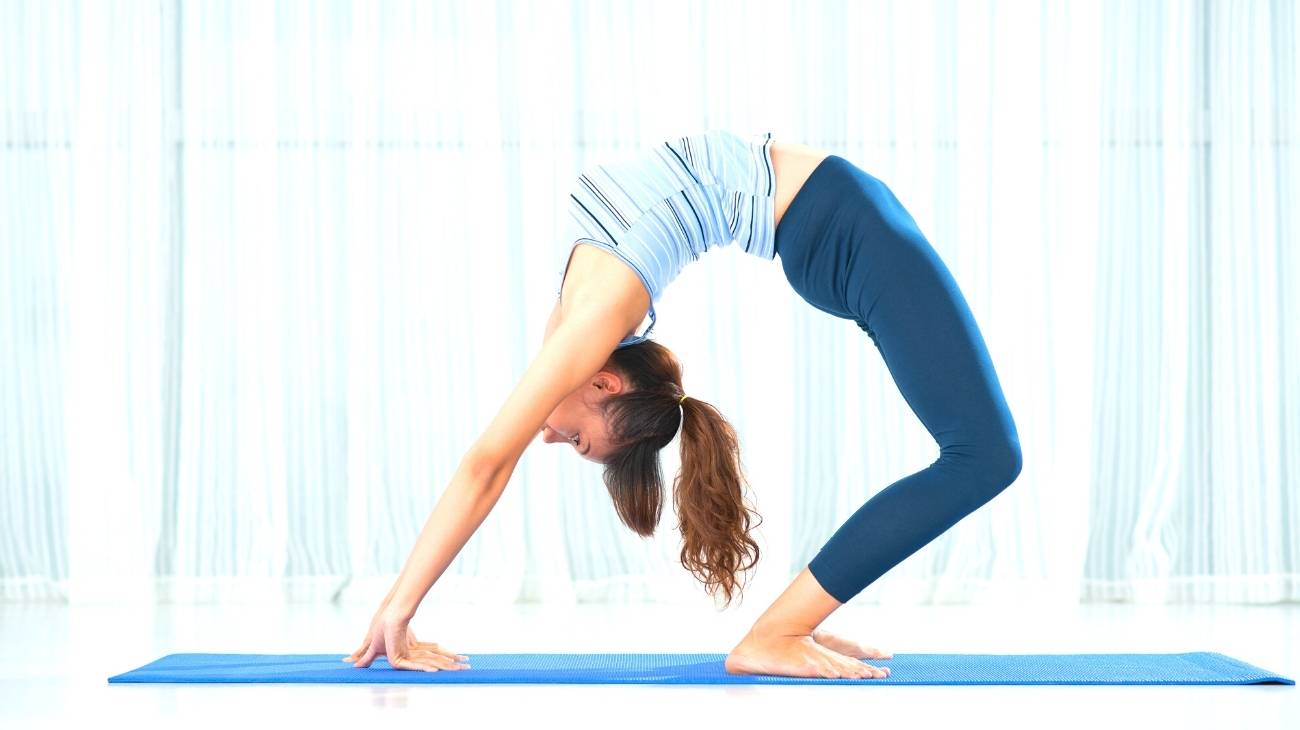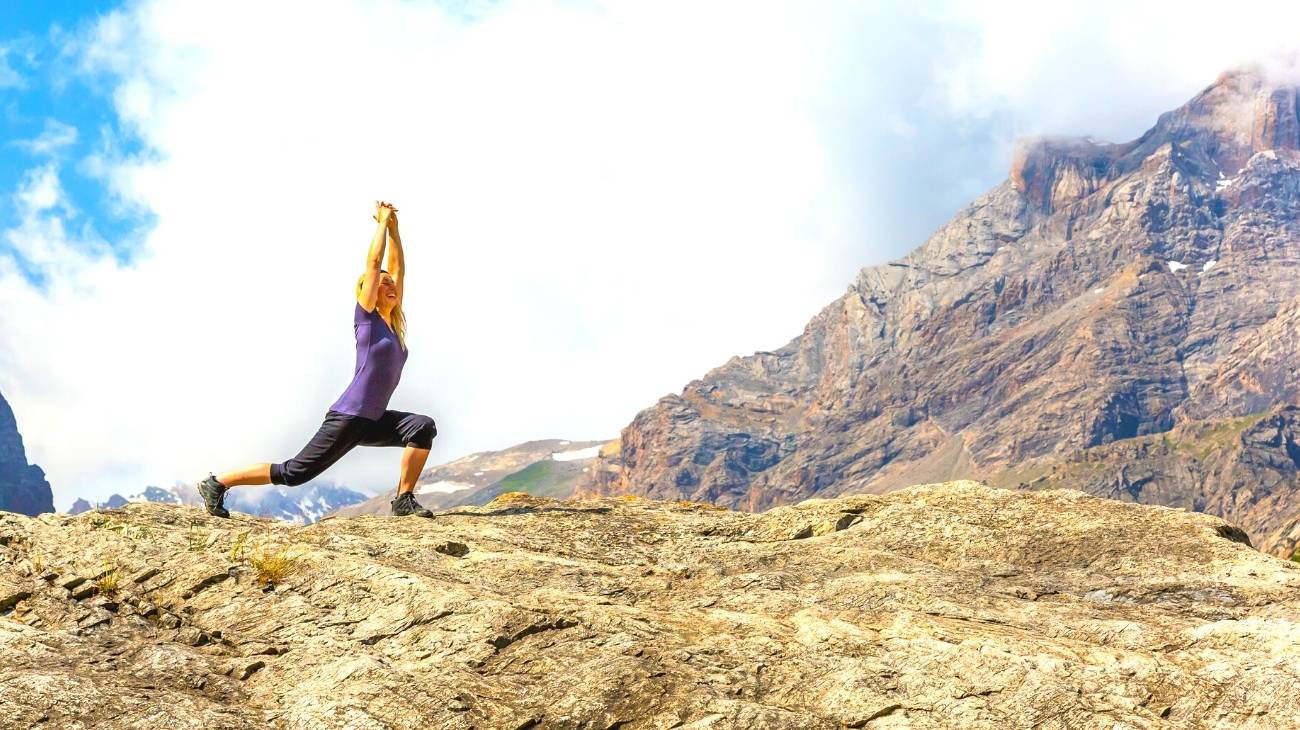Yoga is one of the many ways to stay fit, prevent injuries and increase flexibility. However, for those who do not use the proper techniques or practice without taking the necessary preventive measures into account, they could suffer from yoga hip injuries, among other conditions.
In the following post we want to talk to you specifically about the most common types of hip injuries, and how to treat them properly when they occur. To find out more, take a look at the following.
What are the most common types of hip injuries when doing Yoga?
The most common hip injuries in yoga are caused by practising risky exercises. Generally, these extreme poses cause instability and stress on the hip, resulting in injury.
In this part, it is important to analyse the hip in relation to the femur and acetabulum. Generally, hip injuries in yoga are generated by simple wear and tear, especially on the cartilaginous or cushioned surface that covers our joints. Over time, the person begins to feel pain caused by irritation and inflammation of the cartilage.
In general, there are three main categories in which hip joint injuries occur:
Hip lambrum tears.
In the practice of yoga, it is very common for muscles, tendons or the labrum and cartilage rim to be compressed as a result of yoga movements. Generally, bony outgrowths such as bone spurs cause compression of the soft tissue structure.
This occurs because of abnormal contact between this extra bone and the hip bones, preventing smooth movements during activity. Over time, labral tears develop. A condition that covers the hip socket, very common in patients with hip impingement. Symptoms include stiffness, repeated clicking and local pain extending to the groin and buttocks.
Osteoarthritis of the hip
Osteoarthritis of the hip or articular cartilage breakdown is a degenerative pathology, caused by wear and tear of the hip cartilage. It begins with local pain that slowly worsens, but can also appear suddenly. There is also a popping or popping sound in the hip, especially during deep flexion. Especially during a circumduction or squat. Often, the stage of this type of arthritis is reached through carelessness in not seeking medical attention. Therefore, it is important to be aware of pain, soreness or popping that could indicate impingement.
Hip dysplasia
This is bone changes, such as cartilage loss or arthritis in various stages, which is a very difficult pathology to identify, especially in the practice of yoga. This is because it is a factor that takes a long time to develop.
It is a hip socket or deep socket that is more superficial than normal. In this way, the person obtains a greater range of motion of the hips, but with less stability. If a yogi has this extreme hip range of motion, it is best to avoid overuse to keep the hips healthy.
Best products for hip and leg injury recovery in Yoga
Bestseller
-
Microwave Wheat Bag for Back Pain Relief (Extra Large) (Hearts)
£24,95 -
Microwave Wheat Bag for Back Pain Relief (Extra Large) (Oxford)
£24,95 -
Microwave Wheat Bag for Back Pain Relief (Extra Large) (Sport)
£24,95 -
Microwave Wheat Bag for Neck & Shoulder Pain Relief (Hearts)
£24,95 -
Microwave Wheat Bag for Neck & Shoulder Pain Relief (Oxford)
£24,95 -
Microwave Wheat Bag for Neck & Shoulder Pain Relief (Sport)
£24,95 -
Microwaveable Wheat Bag for Pain Relief (Hearts)
£20,95 -
Microwaveable Wheat Bag for Pain Relief (Oxford)
£20,95 -
Microwaveable Wheat Bag for Pain Relief (Sport)
£20,95 -
Wheat Bag for Microwave Classic Bottle Shaped (Hearts)
£20,95 -
Wheat Bag for Microwave Classic Bottle Shaped (Oxford)
£20,95 -
Wheat Bag for Microwave Classic Bottle Shaped (Sport)
£20,95
-
Back Support Belt (Black)
£39,95 -
Back Support Belt (Green)
£39,95 -
Back Support Belt (Pink)
£39,95 -
Ice Massage Roller Ball (Black)
£34,95 -
Ice Massage Roller Ball (Green)
£34,95 -
Ice Massage Roller Ball (Pink)
£34,95 -
Sacroiliac Support Belt (Black)
£24,95 -
Sacroiliac Support Belt (Green)
£24,95 -
Sacroiliac Support Belt (Pink)
£24,95 -
Soft Density Foam Roller for Recovery (Black)
£34,95 -
Soft Density Foam Roller for Recovery (Green)
£34,95 -
Soft Density Foam Roller for Recovery (Pink)
£34,95
How to apply the RICE therapy to treat hip injuries in Yoga?
The PRICE therapy, formerly called RICE, is a protocol applied to treat pain and inflammation while preventing the injury from worsening. This principle refers to Protection, Rest, Ice, Compression and Elevation of the injured area.
Although it is a very useful and effective method for treating all types of injuries, recent studies have shown that it is not necessarily effective in all cases. There are parts of the body where injuries are generated, such as the hip, which makes it difficult to carry out the elevation phase. These specialists also state that, in the resting phase, it also refers to a relative immobilisation. So, although activity in the injured area can be reduced, it is not always possible to immobilise it completely.
Another aspect to consider in this measure is the use of ice as an analgesic and anti-inflammatory. In injuries that develop over the long term or degenerative injuries, cold is not indicated. Although the PRICE therapy cannot cover all cases, it is important to assess each case and the phases of the protocol for each type of injury and patient.
Below, we will talk about its phases and how to apply them in cases that refer hip injuries due to yoga:
- Protection: During this phase we will prevent further injury by avoiding activity immediately. In this way, blood flow is reduced, which will prevent inflammation of the injured area.
- Rest: Rest or rest will serve to obtain an effective recovery. To achieve this, it is necessary to suspend physical activity in the practice of yoga, especially in extreme movements of the hip that could aggravate the injury.
- Ice: When faced with acute pain in the hip, applying ice immediately will help to generate vasoconstriction of the blood vessels in the injured area. This will reduce pain, oedema formation and muscle spasm. This should be done for 15 to 20 minutes during the first 72 hours after the injury, repeating 3 to 4 times a day.
- Compression: In order to decrease the blood supply to the injured area, a bandage, hip supports and hip orthoses are used. However, this should not be too tight to avoid circulatory blockage of the blood.
- Elevation: During this phase the injured area should be elevated, with the aim of reducing blood pressure. However, this will depend on the type of injury and the severity of the injury, as poor practice could make it worse. Our recommendation is to contact a specialist for a personalised assessment.
References
- Feuerstein, G. Preventing Yoga Injuries vs Preventing Yoga, Part I: The Hip Labrum. https://www.dailybandha.com/2013/11/preventing-yoga-injuries-vs-preventing.html
- Fishman, L. M. (2009). Yoga for osteoporosis: a pilot study. Topics in Geriatric Rehabilitation, 25(3), 244-250. https://journals.lww.com/topicsingeriatricrehabilitation/Fulltext/2009/07000/Yoga_for_Osteoporosis__A_Pilot_Study.9
- Kaplanek, B. A., Levine, B., & Jaffe, W. L. (2011). Pilates for hip and knee syndromes and arthroplasties. Human Kinetics. https://books.google.es/books?hl=en&lr=&id=vO96DwAAQBAJ
- De Paulis, F., Cacchio, A., Michelini, O., Damiani, A., & Saggini, R. (1998). Sports injuries in the pelvis and hip: diagnostic imaging. European journal of radiology, 27, S49-S59. https://www.sciencedirect.com/science/article/abs/pii/S0720048X98000436
- Lynch, T. S., Bedi, A., & Larson, C. M. (2017). Athletic hip injuries. JAAOS-Journal of the American Academy of Orthopaedic Surgeons, 25(4), 269-279. https://journals.lww.com/jaaos/Abstract/2017/04000/Athletic_Hip_Injuries.3.aspx
- Ravi, S. (2016). The application and effectiveness of yoga in prevention and rehabilitation of sport injuries in athletes participating in competitive sport. LASE JOURNAL OF SPORT SCIENCE is a Scientific Journal published two times per year in Sport Science LASE Journal for sport scientists and sport experts/specialists, 44. https://www.journal.lspa.lv/images/2016/1/4_LASE_2016_1.pdf
- Russell, K., Gushue, S., Richmond, S., & McFaull, S. (2016). Epidemiology of yoga-related injuries in Canada from 1991 to 2010: a case series study. International journal of injury control and safety promotion, 23(3), 284-290. https://www.tandfonline.com/doi/abs/10.1080/17457300.2015.1032981
- Cramer, H., Lauche, R., Haller, H., Steckhan, N., Michalsen, A., & Dobos, G. (2014). Effects of yoga on cardiovascular disease risk factors: a systematic review and meta-analysis. International journal of cardiology, 173(2), 170-183. https://www.sciencedirect.com/science/article/abs/pii/S0167527314003702
- Paterson, J. (2008). Teaching Pilates for Postural Faults, Illness and Injury: A Practical Guide. Elsevier Health Sciences. https://books.google.es/books?hl=en&lr=&id=A-CAnOi4RV0C
- Barker, A. L., Talevski, J., Bohensky, M. A., Brand, C. A., Cameron, P. A., & Morello, R. T. (2016). Feasibility of Pilates exercise to decrease falls risk: a pilot randomized controlled trial in community-dwelling older people. Clinical rehabilitation, 30(10), 984-996. https://journals.sagepub.com/doi/abs/10.1177/0269215515606197

